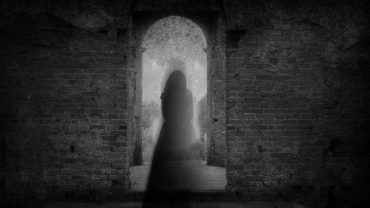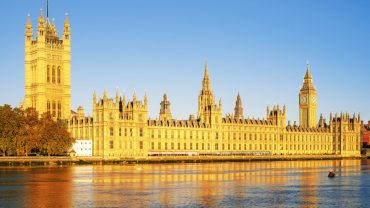From the grainy black-and-white images of early broadcasts to today’s ultra HD, live-streamed spectacles, television has not only entertained, but also connected billions of people, transcending borders and cultures to create shared global experiences. It has the phenomenal power to deliver real-time events directly into our living rooms, making us witnesses to history as it unfolds.
TV has delivered truly unforgettable memories, including edge-of-your-seat sporting events, astonishing news stories, remarkable documentaries, and unmissable drama, but certain moments have captivated audiences on an unprecedented scale, leaving indelible marks on the collective memory.
Ten million or more watched Susan Boyle stun the Britain’s Got Talent audience with her incredible rendition of I Dreamed A Dream. Over 24 million watched Del Boy finally become a millionaire in the classic episode of Only Fools & Horses, and more than thirty million watched Geoff Hurst bag a hat-trick as England won the World Cup in 1966, but those numbers are small-fry compared to the biggest television audiences of all time.
Curious to see if anything you’ve watched made the list? Here are ten of the most watched events in TV history.
How Many?

How many are tuning in? (Credit: simonkr via Getty Images)
It’s difficult to collate precise viewing figures for television programmes. It was hard enough when programmes were broadcast in real-time and the only device people watched on was the actual TV. Now, with the rise of online streaming, delayed and on-demand viewing across multiple devices and differences in time zones, it’s a serious task to know how many people are tuning in.
There’s also a number of different methods used to measure the audience, and there’s no single global entity that consolidates viewership data, making it difficult to produce a definitive list of history’s most watched TV events.
Despite all this, various industry bodies and statisticians have done their best to put the numbers together on global viewership. Here then, are ten of the most watched TV events in the history of broadcasting, according to the generally accepted available sources.
2011 Cricket World Cup Final | Approx. 300 Million

The 2011 World Cup Final was watched by a huge audience (Credit: Amita Bajaj via Getty Images)
In one of the most exciting and dramatic cricket matches of all time, India beat Sri Lanka by six wickets in Mumbai to end their twenty-eight year wait for cricket’s ultimate prize, and in the process sent a cricket-loving nation into raptures.
Sri Lanka batted first, and a century from Mahela Jayawardene put the away side on course for a famous victory, before a knock of 97 from Gautam Gambhir and 91 from Player of the Match MS Dhoni secured India’s first World Cup win since 1983.
An Indian TV audience of around 135 million watched the game live, and millions more around the world caught the nail-biting action.
Apollo 11 Moon Landing | Approx. 650 Million

The greatest single broadcast in television history (Credit: Jindřich Blecha via Getty Images)
Dubbed ‘the greatest single broadcast in television history’, watching Neil Armstrong exit the Eagle module and take humankind’s first tentative steps on the moon’s surface left a profound impact on those who were lucky enough to watch it live on 21st July 1969.
To say the least, broadcasting live from the moon was an astonishing technical and logistical effort, with the images uploaded to Earth-orbiting satellites, transmitted to NASA in Houston, and then beamed around the world. In Britain, the pictures were received by Goonhilly Antenna 1 in Cornwall and then transmitted by microwaves to the Post Office Tower (now known as the BT Tower) in London and around the country.
The UK broadcast started on 20th July and ran continuously for eleven hours – the first all-night broadcast in British television history – and Armstrong stepped onto the moon’s surface at 3.56am on the 21st, watched by a worldwide audience of around 650 million people.
Wedding of Prince Charles & Lady Diana Spencer | Approx. 750 Million

Comemmorative coin celebrating the wedding of Prince Charles & Lady Diana (Credit: zoroasto via Getty Images)
The wedding of Prince Charles, the heir apparent to the British throne, and Lady Diana Spencer, was billed as the ‘fairytale wedding of the century’ and it more than lived up to its billing.
It took place on 29th July 1981 at St Paul’s Cathedral in London and was conducted by the then Archbishop of Canterbury, Robert Runcie. Much of the Commonwealth tuned in to watch the wedding on TV and it’s thought that more than 600,000 people lined the streets to watch the processions to and from St. Paul’s and Buckingham Palace.
Most of Europe’s reigning heads of state were in attendance, and the US was represented by First Lady Nancy Reagan. Charles and Diana had no less than twenty seven wedding cakes, and the official cake, made by David Avery, head baker of the Royal Naval Cooking School, took fourteen weeks to design and make.
Opening Ceremony, London 2012 | Approx. 900 Million

Tower Bridge & The Olympic Rings, London 2012 (Credit: Daniele Lembo via Getty Images)
The opening ceremony of the 2012 Olympic Games in London was one of the most watched TV events in history. It was titled Isles of Wonder, and directed by Oscar-winning British film director Danny Boyle.
The sensational spectacle cost an estimated £27 million and was broadcast uninterrupted on the BBC between 7pm and 1.50am to a peak UK audience of just under 27 million, and a worldwide audience of around 900 million.
Highlights included performances by Rowan Atkinson, music from Dizzee Rascal and the Arctic Monkeys, and HRH The Queen*, accompanied by Daniel Craig as James Bond, parachuting into the Olympic Park from a helicopter.
*The Queen used a stunt double for the actual jump.
Rescue of the Chilean Miners | Approx. 1 Billion

The San Jose Mine in Chile (Credit: Felipe Ahumada via Getty Images)
On 5th August 2010, the San José copper-gold mine in Chile’s Atacama Desert caved in, trapping thirty-three miners 700 metres underground, five kilometres from the mine’s entrance. For seventeen days there was no contact, but then, a camera probe glimpsed a scrawled note that said, Estamos bien en el refugio, los 33. ‘We are well in the shelter, the 33.’
An international rescue effort was spearheaded by the Chilean government, aided by NASA, drilling companies, and medical teams. Over the course of the next seven weeks, TV audiences the world over watched in anticipation until the 13th October, when, one by one, all thirty-three men were winched to the surface starting with Florencio Avalos, and then twenty-two hours later, Luis Urzua.
It’s estimated that over a billion people watched in awe as the miners surfaced. Not only was it one of the most watched events in TV history, it was one of the most astonishing.
2022 FIFA World Cup Final | Approx. 1.5 Billion

Millions tuned in to watch the match billed as Messi v Mbappe (Credit: FG Trade via Getty Images)
One of the best football matches in the history of the sport, the final of the 2022 World Cup pitted the two best players in the world, Argentina’s talisman Lionel Messi, and French sensation Kylian Mbappe, against each other for football’s ultimate prize.
Mbappe, a winner with France in 2018, and Messi, widely considered the greatest player ever to have played the game but with one glaring omission in his overloaded trophy cabinet, faced off on 18th December 2022. The match was played at the Lusail Stadium in Qatar in front of almost 89,000 fans and a global TV audience of around 1.5 billion.
Argentina cruised into half-time 2-0 up with goals from Messi and Angel Di Maria, but two late strikes from Mbappe sent the game into extra time. A Messi strike was ruled out by Mbappe’s hat-trick goal two minutes from time, with Argentina eventually winning on penalties. An remarkable TV audience for an remarkable game.
Live Aid | Approx. 1.5 Billion

Live Aid played to a global TV audience of around 1.5 billion (Credit: Cesare Ferrari via Getty Images)
Held simultaneously at Wembley Stadium in London and John F. Kennedy Stadium in Philadelphia, Live Aid was the brainchild of Boomtown Rat Bob Geldof, and Midge Ure, the lead singer of 80s new-wave band Ultravox, and it became the biggest benefit concert in history.
Highlights included seminal performances by Queen, David Bowie, U2, The Who, Elton John, and Paul McCartney in the UK, and Black Sabbath, The Beach Boys, Eric Clapton, Led Zeppelin, Madonna, and Dire Straits in the USA.
The event, which took place on 13th July 1985, was created to raise funds to support the famine in Ethiopia and it was a staggeringly ambitious – and unprecedented – feat of broadcasting. The concert used thirteen satellites for around sixteen hours of continuous live transmission to over 100 countries and was watched by an audience of around 1.5 billion people, around 40% of the world’s population at the time.
Leon Spinks vs. Muhammad Ali II | Approx. 2 Billion

The Ali - Spinks rematch took place at the Louisiana Superdome (Credit: Philip Gould via Getty Images)
One of the most famous rematches in boxing history saw Leon Spinks take on Muhammad Ali on 15th September 1978 in the Battle of New Orleans. Spinks shocked Ali – and the world – in Las Vegas the previous February to become the world heavyweight champion, and the rematch at the Louisiana Superdome proved to be just as good a fight.
Ali, by then aged 36 and in the twilight of his career, beat 25-year old Leon ‘Neon’ Spinks by a unanimous decision in front of a live crowd of just over 63,000, the largest indoor attendance for a boxing match. The television audience in the USA was estimated to be around 90 million – with just under 47% of all TV sets tuned in – but the global TV audience was reported to top two billion.
Memorial Service of Michael Jackson | Approx. 1.5 - 2 Billion

Aerial view of the Staples Center in Los Angeles (Credit: EXTREME-PHOTOGRAPHER via Getty Images)
Following his death on 25th June 2009, the memorial service for Michael Jackson, widely considered to be one of the twentieth century’s best-known cultural and musical icons, was held at the Staples Center in downtown Los Angeles on 7th July. The service was broadcast live to a worldwide audience believed to be somewhere around two billion.
Funeral of Diana, Princess of Wales | Approx. 2 - 2.5 Billion

Diana was laid to rest at Althorp in Northamptonshire (Credit: Christine_Kohler via Getty Images)
After her tragic death in Paris on 31st August 1997, the funeral of Diana, Princess of Wales took place a week later on 6th September at Westminster Abbey with two thousand invited guests in attendance. Over a million people lined London’s streets and somewhere between two and 2.5 billion watched the funeral live on television.
The service was conducted by Wesley Carr, the Dean of Westminster and is remembered in part for Elton John’s moving rendition of his updated version of Candle in the Wind.
After the service in Westminster, Diana’s coffin was driven to the Spencer family estate, Althorp in Northamptonshire, where she was interred on a small island in the middle of the Round Oval lake.












